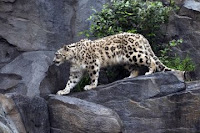LifeStraw, Carbon for Water for Western Kenya

Lifestraw
LifeStraw is a portable water filter, manufactured by a Swiss company: Vestergaard Frandsen - that removes all bacteria and parasites responsible for causing diseases, especially diarrhea. Many people in Africa have to boil water to kill harmful parasites and bacteria in the water. Which means burning charcoal or firewood; which means the cutting down of trees. A few months ago, Vestergaard Frandsen launched a project called Carbon for Water - to provide hundreds of thousands of their water filter to Western Kenya. Nearly 900,000 LifeStraw® Family water filters will be installed in almost all households in the Western Province of Kenya beginning on 26 April. The province-wide, door-to-door, free distribution program will last almost six weeks and reach about 90 percent of all homes without access to safe municipal water sources. It will provide point-of-use water filtration for Kenyan residents for at least 10 years and do so without any cost to local residents, gov...




